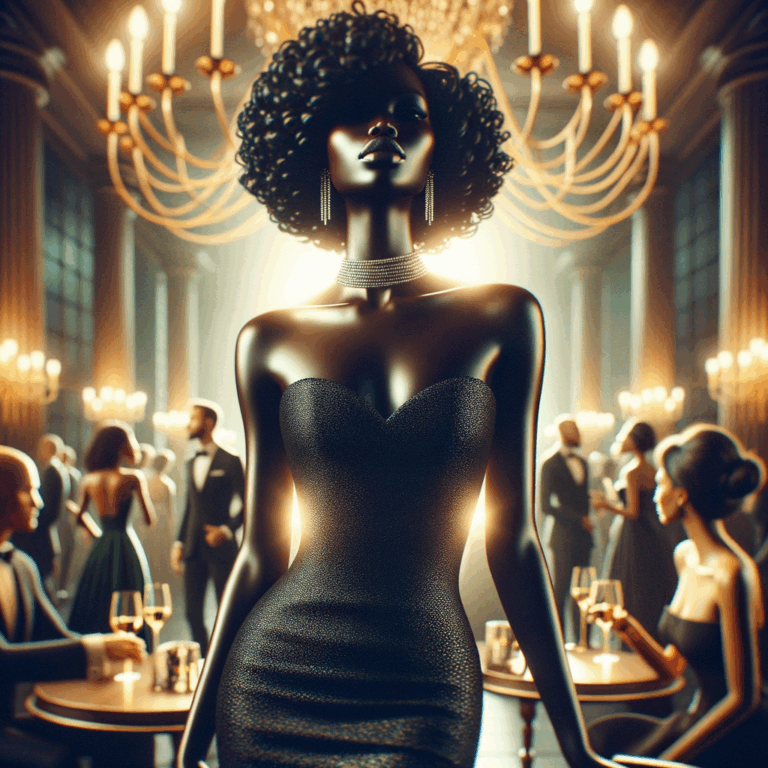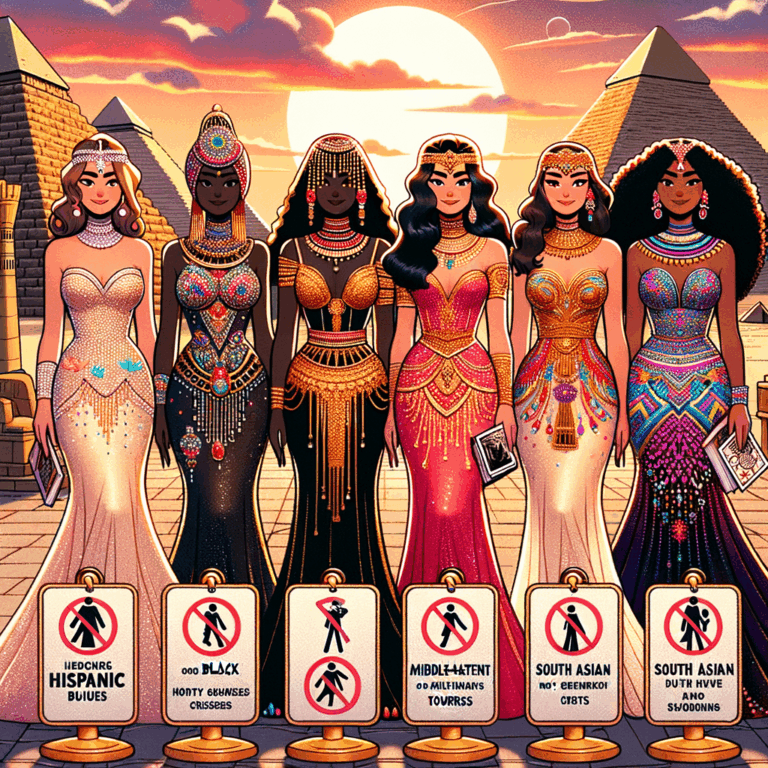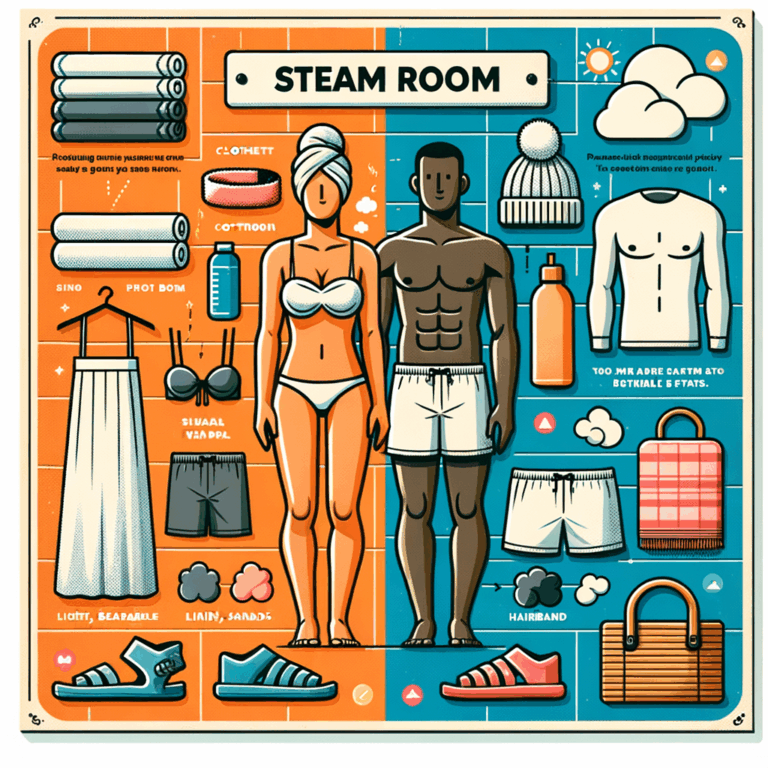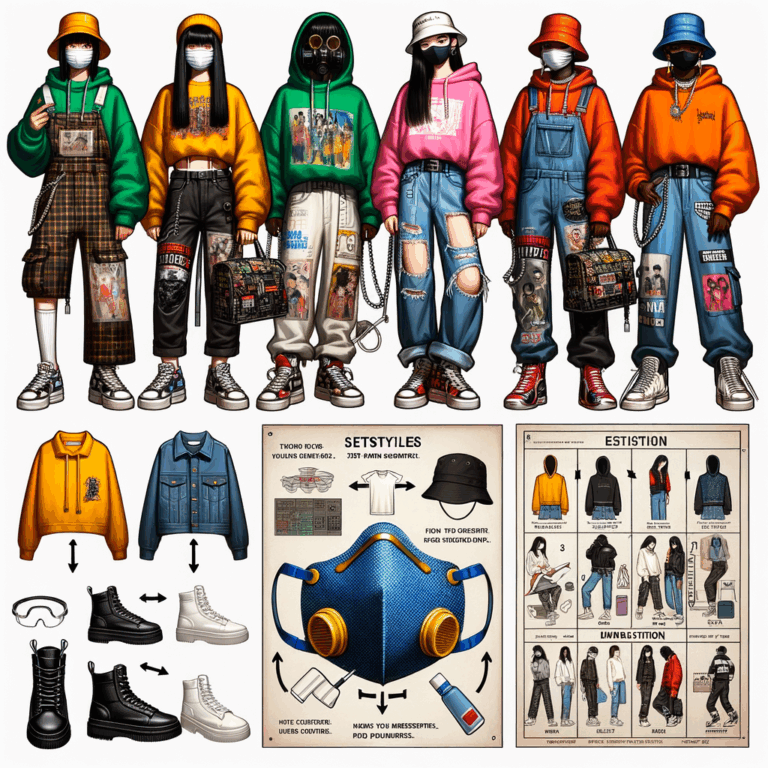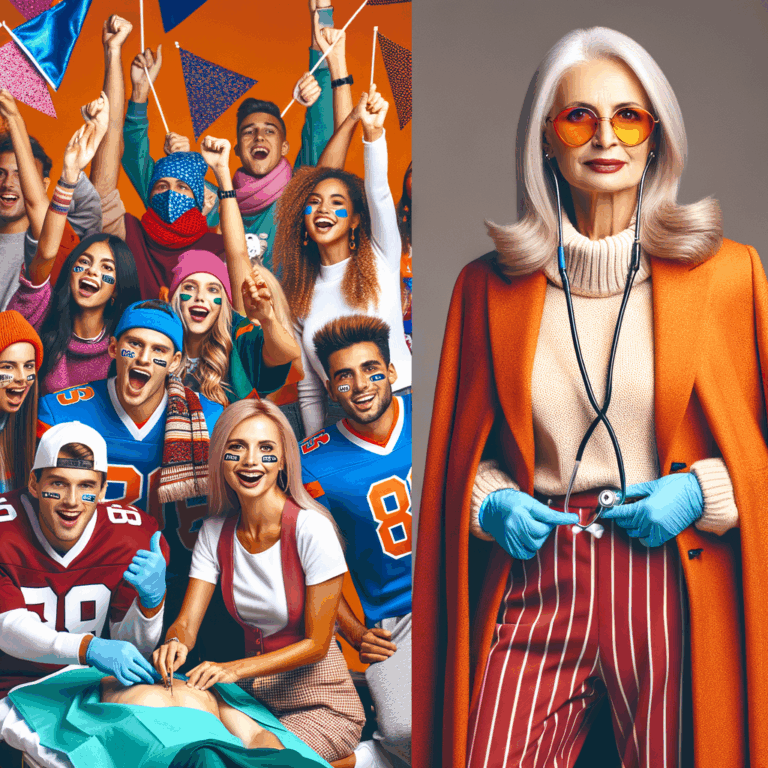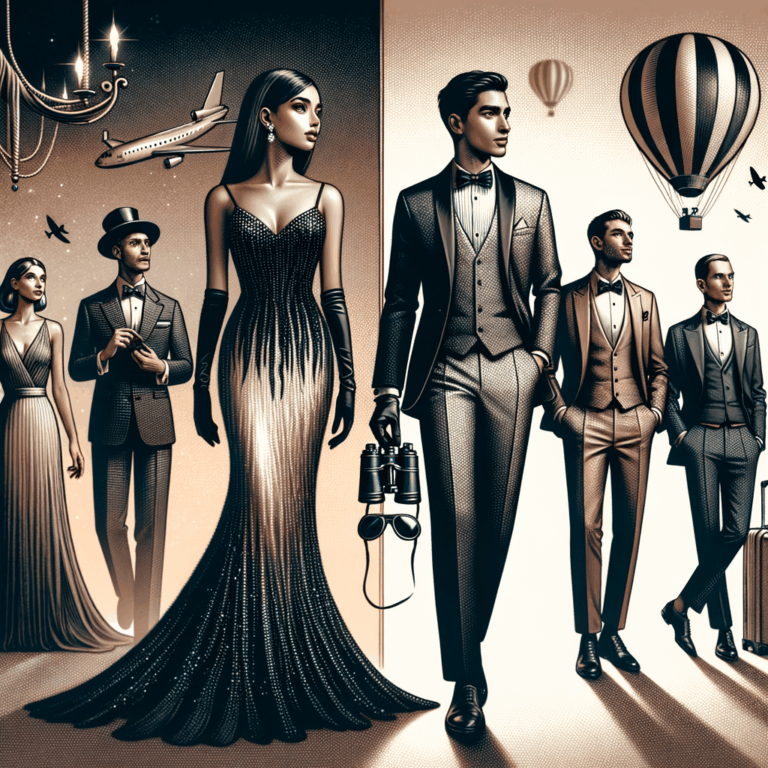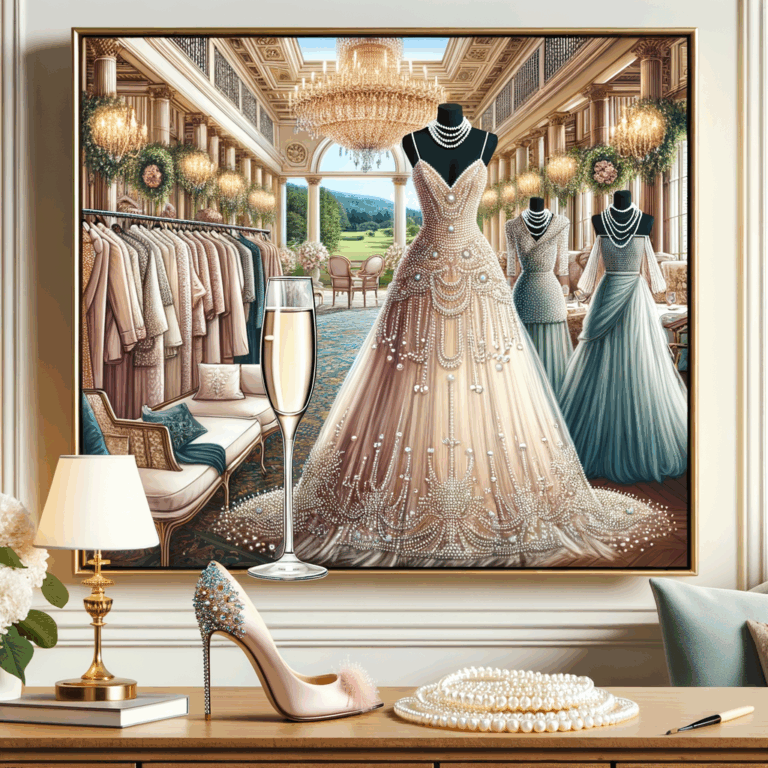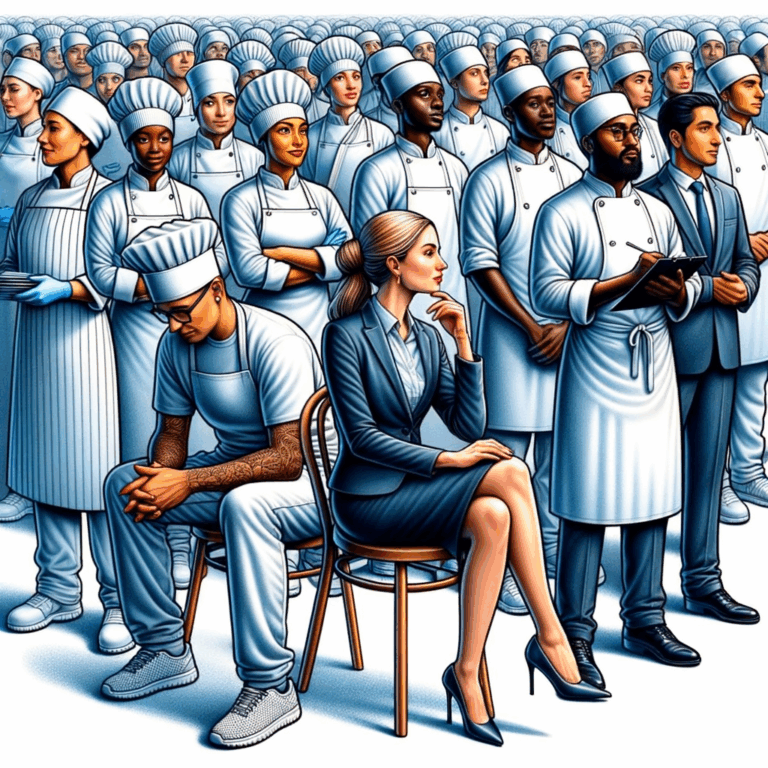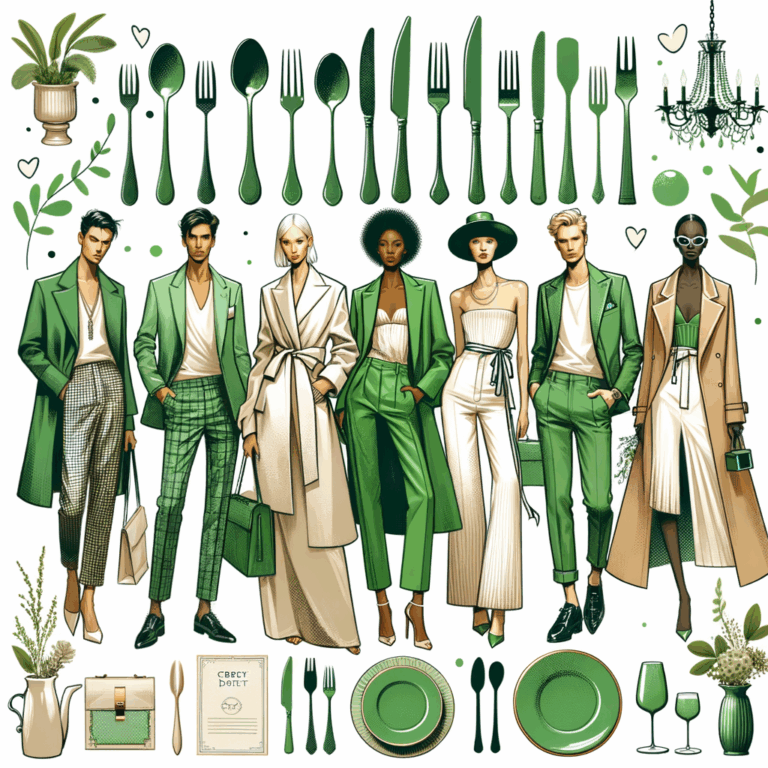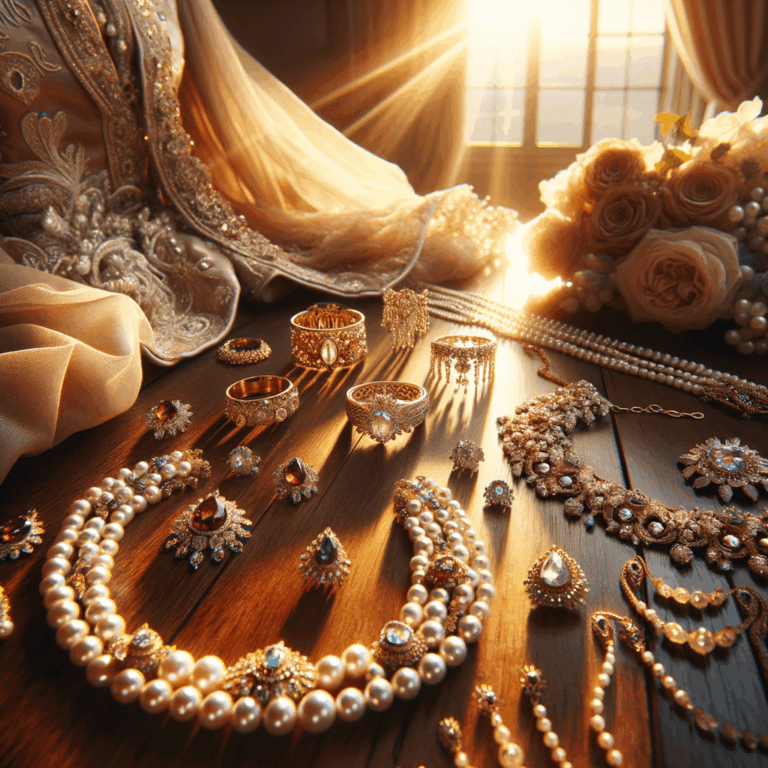
Blog
Retro chic: Unveiling the fashion of the 60’s women.
Introduction
In the 1960s, women’s fashion underwent significant changes influenced by various social and cultural movements. The decade witnessed a shift towards more youthful and daring styles, reflecting the spirit of rebellion and liberation that characterized the era. Women’s clothing in the 1960s embraced bold colors, shorter hemlines, and innovative designs that challenged traditional norms.
Fashion Trends of the 1960s for Women
The 1960s was a decade of change and revolution, and this was reflected in the fashion trends of the time. Women’s fashion in the 60s was bold, daring, and a reflection of the social and cultural shifts happening around them. From the iconic mini skirt to the psychedelic prints, women in the 60s embraced a new sense of freedom and self-expression through their clothing.
One of the most iconic fashion trends of the 60s was the mini skirt. This revolutionary garment, popularized by British designer Mary Quant, challenged traditional notions of femininity and modesty. The mini skirt was a symbol of liberation for women, allowing them to show off their legs and embrace their sexuality. It was a bold statement that said, “I am confident, I am modern, and I am in control of my own body.”
Alongside the mini skirt, women in the 60s also embraced bold and vibrant colors. The psychedelic prints that became popular during this time were a reflection of the counterculture movement and the spirit of rebellion. These prints were often seen on dresses, blouses, and even accessories like scarves and handbags. They were a way for women to express their individuality and reject the conformity of previous decades.
Another key trend of the 60s was the shift dress. This simple, straight-cut dress was a departure from the structured and tailored silhouettes of the 50s. The shift dress was comfortable, easy to wear, and allowed for freedom of movement. It became a staple in every woman’s wardrobe and was often paired with knee-high boots or flats for a mod-inspired look.
Accessories also played a crucial role in 60s fashion. Women adorned themselves with chunky jewelry, oversized sunglasses, and statement hats. These accessories added a touch of glamour and drama to their outfits, and were often used to make a bold statement. Whether it was a pair of large hoop earrings or a wide-brimmed hat, women in the 60s knew how to use accessories to complete their look and make a statement.
The fashion trends of the 60s were not just about clothing, but also about embracing a new way of life. Women in the 60s were breaking free from traditional gender roles and societal expectations. They were demanding equal rights, fighting for social justice, and challenging the status quo. Their fashion choices were a reflection of their rebellious spirit and their desire for change.
In conclusion, the fashion trends of the 60s for women were bold, daring, and a reflection of the social and cultural shifts happening around them. From the mini skirt to the psychedelic prints, women in the 60s embraced a new sense of freedom and self-expression through their clothing. The fashion of the 60s was not just about looking good, but also about making a statement and challenging the norms of society. It was a time of revolution and change, and women’s fashion played a crucial role in that. The fashion trends of the 60s continue to inspire and influence designers and fashionistas today, reminding us of the power of clothing to express our individuality and make a statement.
Iconic Styles Worn by Women in the 60s
The 1960s was a decade of change and revolution, and this was reflected in the way women dressed during this time. Women in the 60s embraced bold and daring styles that challenged societal norms and celebrated individuality. From the iconic mod fashion to the bohemian hippie look, the fashion choices of women in the 60s continue to inspire and influence designers and fashionistas today.
One of the most iconic styles worn by women in the 60s was the mod fashion. This style was characterized by its clean lines, geometric patterns, and vibrant colors. Women in the 60s embraced mini skirts, shift dresses, and go-go boots, which were all key elements of the mod look. The mod fashion was a rebellion against the conservative styles of the previous decade, and it symbolized the liberation and empowerment of women.
Another iconic style of the 60s was the bohemian hippie look. This style was inspired by the counterculture movement and was characterized by its flowing fabrics, earthy colors, and eclectic accessories. Women in the 60s embraced maxi dresses, bell-bottom pants, and fringe vests, which were all key elements of the bohemian hippie look. The bohemian hippie style represented a rejection of mainstream society and a desire for peace, love, and freedom.
In addition to these iconic styles, women in the 60s also embraced other fashion trends that defined the decade. The Jackie Kennedy look, inspired by the elegant and sophisticated style of the former First Lady, was a popular choice among women in the 60s. This style was characterized by its tailored suits, pillbox hats, and oversized sunglasses. The Jackie Kennedy look represented a sense of class and refinement, and it continues to be a timeless fashion inspiration.
The 60s also saw the rise of the mini dress, which became a symbol of liberation and female empowerment. Women in the 60s embraced the mini dress as a way to challenge societal norms and express their individuality. The mini dress was often paired with knee-high boots or Mary Jane shoes, creating a youthful and playful look. The mini dress represented a break from tradition and a celebration of freedom and self-expression.
The fashion choices of women in the 60s were not only a reflection of the changing times but also a form of self-expression and empowerment. Women in the 60s used fashion as a way to challenge societal norms and assert their independence. Whether it was the mod fashion, the bohemian hippie look, or the Jackie Kennedy style, women in the 60s embraced bold and daring styles that continue to inspire and influence fashion today.
In conclusion, the fashion choices of women in the 60s were a reflection of the changing times and a celebration of individuality. From the mod fashion to the bohemian hippie look, women in the 60s embraced bold and daring styles that challenged societal norms and celebrated freedom and self-expression. The fashion choices of women in the 60s continue to inspire and influence designers and fashionistas today, reminding us of the power of fashion to empower and inspire.
Influence of the Mod Movement on Women’s Fashion in the 60s
The 1960s was a decade of change and revolution, and nowhere was this more evident than in the world of fashion. Women’s fashion in the 60s was heavily influenced by the Mod movement, a youth subculture that emerged in London and quickly spread across the globe. The Mod movement was characterized by its bold and innovative style, and it had a profound impact on the way women dressed during this era.
One of the key elements of Mod fashion was its rejection of traditional gender roles and its celebration of androgyny. Women in the 60s began to experiment with clothing that was traditionally associated with men, such as tailored suits and trousers. This was a radical departure from the feminine and restrictive styles of the previous decade, and it allowed women to express their independence and individuality through their clothing.
Another important aspect of Mod fashion was its emphasis on clean lines and geometric shapes. Shift dresses, which were straight and loose-fitting, became incredibly popular during this time. These dresses were often made from bold and vibrant fabrics, and they were typically worn with knee-high boots or Mary Jane shoes. The shift dress was a symbol of the Mod movement’s rejection of the past and its embrace of the future, and it remains an iconic piece of 60s fashion to this day.
Accessories also played a crucial role in defining the Mod look. Women in the 60s embraced bold and eye-catching accessories, such as oversized sunglasses, statement jewelry, and brightly colored handbags. These accessories were often used to add a pop of color to an otherwise monochromatic outfit, and they helped to create a sense of individuality and self-expression.
Hair and makeup were also important components of the Mod look. Women in the 60s began to experiment with new and daring hairstyles, such as the iconic beehive and the sleek bob. These hairstyles were often paired with dramatic eye makeup, featuring heavy eyeliner and false lashes. The overall effect was a look that was both glamorous and futuristic, and it perfectly encapsulated the spirit of the Mod movement.
The influence of the Mod movement on women’s fashion in the 60s cannot be overstated. It was a time of great change and experimentation, and women were no longer content to conform to societal expectations. The Mod movement gave women the freedom to express themselves through their clothing, and it paved the way for the bold and innovative styles that would come to define the decade.
In conclusion, women’s fashion in the 60s was heavily influenced by the Mod movement. The Mod movement rejected traditional gender roles and celebrated androgyny, and it encouraged women to experiment with bold and innovative styles. The clean lines and geometric shapes of Mod fashion, as well as the emphasis on accessories and hair and makeup, created a look that was both glamorous and futuristic. The influence of the Mod movement on women’s fashion in the 60s was profound, and it continues to inspire and influence designers and fashionistas to this day.
The Role of Mini Skirts in 1960s Women’s Fashion

The 1960s was a decade of change and revolution, and nowhere was this more evident than in the world of fashion. Women’s fashion in the 60s was a reflection of the changing times, with bold and daring styles that challenged traditional norms. One of the most iconic fashion trends of the era was the mini skirt, which played a significant role in shaping women’s fashion and empowering women to express themselves.
The mini skirt, with its daringly short length, was a symbol of liberation and freedom for women in the 60s. It was a stark departure from the conservative and modest styles of the previous decade, and it represented a new era of female empowerment. The mini skirt was a statement piece that allowed women to showcase their legs and embrace their sexuality, challenging societal expectations and norms.
The popularity of the mini skirt can be attributed to several factors. First and foremost, it was a reflection of the changing attitudes towards women’s roles in society. The 60s saw the rise of the feminist movement, and the mini skirt became a symbol of women’s liberation and equality. By wearing a mini skirt, women were asserting their independence and rejecting the notion that they should be confined to traditional gender roles.
Additionally, the mini skirt was a response to the changing cultural landscape of the 60s. The decade was marked by a spirit of rebellion and nonconformity, and the mini skirt embodied this spirit perfectly. It was a bold and unconventional choice that challenged societal norms and pushed the boundaries of what was considered acceptable. By wearing a mini skirt, women were making a statement and asserting their individuality.
The mini skirt also had a significant impact on the fashion industry itself. Designers embraced the trend and began creating a wide variety of mini skirt styles, from A-line to pleated to wrap. The mini skirt became a staple in women’s wardrobes, and it was seen on runways and in fashion magazines around the world. It was a trend that transcended social and economic boundaries, and it became a symbol of youth and vitality.
In addition to its cultural and fashion significance, the mini skirt also had a practical aspect. It allowed women to move more freely and comfortably, which was especially important during a time when women were becoming more active and involved in various aspects of society. The mini skirt was a garment that enabled women to participate in activities such as dancing, sports, and even protesting, without feeling restricted by their clothing.
In conclusion, the mini skirt played a pivotal role in 1960s women’s fashion. It was a symbol of liberation and empowerment, challenging traditional norms and allowing women to express themselves freely. The mini skirt was a reflection of the changing attitudes towards women’s roles in society and the cultural landscape of the 60s. It became a staple in women’s wardrobes and had a lasting impact on the fashion industry. The mini skirt was more than just a fashion trend; it was a statement of individuality and a symbol of progress.
Bohemian Fashion and Hippie Culture in the 60s
The 1960s was a decade of change and revolution, and nowhere was this more evident than in the world of fashion. Women’s clothing underwent a dramatic transformation during this time, as the traditional constraints of the previous decade were cast aside in favor of a more free-spirited and individualistic approach. Bohemian fashion and hippie culture emerged as powerful forces, shaping the way women dressed and expressing their desire for freedom and self-expression.
Bohemian fashion, with its roots in the artistic and intellectual communities of Europe, became increasingly popular in the 1960s. This style was characterized by flowing, loose-fitting garments made from natural fabrics such as cotton and linen. Women embraced the bohemian look, which allowed them to reject the rigid gender norms of the past and embrace a more relaxed and comfortable way of dressing.
One of the key elements of bohemian fashion was the maxi dress. These floor-length dresses were often adorned with vibrant prints and patterns, reflecting the bold and colorful spirit of the era. The maxi dress became a symbol of freedom and rebellion, as women embraced the idea of dressing for themselves rather than conforming to societal expectations.
Accessories also played a crucial role in bohemian fashion. Women adorned themselves with long, beaded necklaces, oversized sunglasses, and floppy hats, adding a touch of whimsy and individuality to their outfits. The bohemian look was all about self-expression, and women took full advantage of the opportunity to experiment with different styles and accessories.
Hippie culture, which emerged in the mid-1960s, further influenced women’s fashion. The hippie movement was characterized by its rejection of mainstream society and its embrace of peace, love, and freedom. This ethos was reflected in the way women dressed, as they sought to break free from the constraints of traditional fashion and embrace a more natural and authentic style.
One of the most iconic pieces of clothing from this era was the tie-dye shirt. This colorful and psychedelic garment became a symbol of the counterculture movement, as women embraced the idea of individuality and non-conformity. Tie-dye shirts were often paired with bell-bottom jeans, another staple of hippie fashion. These wide-legged pants were a departure from the slim-fitting styles of the previous decade, and they allowed women to move freely and comfortably.
In addition to tie-dye and bell-bottoms, women also embraced other elements of hippie fashion. Fringed vests, peasant blouses, and embroidered denim jackets were all popular choices, as women sought to create a look that was uniquely their own. The emphasis was on natural fabrics and handmade garments, reflecting the desire for a simpler and more authentic way of life.
The fashion of the 1960s was a reflection of the social and cultural changes taking place at the time. Women embraced bohemian fashion and hippie culture as a way to express their desire for freedom and self-expression. The clothing of this era was characterized by its boldness, individuality, and rejection of traditional norms. The 1960s was a time of revolution, and nowhere was this more evident than in the way women dressed.
Women’s Hairstyles and Makeup Trends in the 1960s
The 1960s was a decade of change and revolution, and this was reflected in the way women dressed, styled their hair, and applied makeup. Women’s hairstyles and makeup trends in the 1960s were bold, daring, and a reflection of the changing times.
One of the most iconic hairstyles of the 1960s was the beehive. This voluminous updo was created by backcombing the hair and then smoothing it over to create a rounded shape. The beehive was often worn with a headband or a scarf, adding a touch of glamour to any outfit. This hairstyle was popularized by celebrities such as Audrey Hepburn and Brigitte Bardot, and it quickly became a symbol of femininity and elegance.
Another popular hairstyle of the 1960s was the pixie cut. This short and boyish haircut was made famous by actress Mia Farrow, who sported it in the film “Rosemary’s Baby.” The pixie cut was a bold statement of independence and rebellion, challenging traditional notions of femininity. It was a hairstyle that empowered women to embrace their natural beauty and break free from societal expectations.
In terms of makeup, the 1960s saw a shift towards a more dramatic and colorful look. The eyes became the focal point, with heavy eyeliner and false lashes being the norm. The iconic “cat-eye” look, characterized by a thick winged eyeliner, was popularized by actress Elizabeth Taylor and became a staple of 1960s makeup. Bright and bold eyeshadow colors such as blue, green, and purple were also popular, adding a pop of color to the eyes.
Lips in the 1960s were often kept pale and neutral, with shades of pink and nude being the most popular. This allowed the focus to remain on the eyes and the overall dramatic look. However, there were also those who embraced a more daring and vibrant lip color, such as red or coral, to make a statement and stand out from the crowd.
The 1960s was a time of social and cultural change, and women’s hairstyles and makeup trends reflected this. The beehive and the pixie cut were hairstyles that challenged traditional notions of femininity and allowed women to express their individuality. The heavy eyeliner and bold eyeshadow colors were a rebellion against the natural and understated makeup looks of the previous decade.
These trends were not just about fashion and beauty; they were a reflection of the changing times and the desire for women to break free from societal expectations. Women in the 1960s were no longer content to conform to traditional gender roles; they wanted to be seen and heard, and their hairstyles and makeup were a way to make a statement.
In conclusion, women’s hairstyles and makeup trends in the 1960s were bold, daring, and a reflection of the changing times. The beehive and the pixie cut challenged traditional notions of femininity, while heavy eyeliner and bold eyeshadow colors made a statement. These trends were not just about fashion and beauty; they were a rebellion against societal expectations and a way for women to express their individuality. The 1960s was a decade of change and revolution, and women’s hairstyles and makeup trends were at the forefront of this cultural shift.
The Evolution of Women’s Evening Wear in the 60s
The 1960s was a decade of change and revolution, and this was reflected in the way women dressed, particularly in the evening. Gone were the conservative and restrictive styles of the previous decade, and in their place emerged a sense of freedom and individuality. Women in the 60s embraced bold colors, daring cuts, and unconventional fabrics, creating a fashion revolution that still influences us today.
One of the most iconic looks of the 60s was the mini dress. This revolutionary garment, which barely grazed the thighs, was a symbol of liberation and rebellion. Women were no longer confined to long hemlines and modest silhouettes; they could now show off their legs and embrace their femininity in a whole new way. The mini dress was often made of bright, psychedelic prints or metallic fabrics, adding to its eye-catching appeal.
Another popular style of the 60s was the shift dress. This simple, straight-cut garment was a favorite among women who wanted a more understated yet chic look. The shift dress was often made of lightweight fabrics like silk or chiffon, allowing for ease of movement and comfort. It was typically worn with knee-high boots or Mary Jane shoes, creating a youthful and playful ensemble.
In the evening, women in the 60s often opted for more glamorous and sophisticated looks. The cocktail dress became a staple of every woman’s wardrobe, with its figure-hugging silhouette and elegant details. These dresses were often made of luxurious fabrics like satin or velvet and featured intricate beading or embroidery. The cocktail dress was typically paired with high heels and statement jewelry, creating a look that exuded confidence and glamour.
For those special occasions, women in the 60s turned to the ball gown. These extravagant dresses were often floor-length and made of opulent fabrics like silk or taffeta. They featured voluminous skirts, fitted bodices, and intricate embellishments. The ball gown was a symbol of elegance and femininity, and women would often accessorize with long gloves and elaborate updos to complete the look.
The 60s also saw the rise of the pantsuit as a fashionable evening option for women. This androgynous ensemble, consisting of tailored trousers and a matching jacket, challenged traditional gender norms and empowered women to embrace their independence. The pantsuit was often made of bold, vibrant colors and featured wide-legged pants and oversized lapels. It was a statement of power and confidence, and women who wore it were seen as trailblazers in the fashion world.
In conclusion, the 1960s was a decade of fashion revolution for women, particularly in the evening. Women embraced bold colors, daring cuts, and unconventional fabrics, breaking free from the conservative styles of the past. The mini dress, shift dress, cocktail dress, ball gown, and pantsuit all played a role in shaping the fashion landscape of the 60s. These garments allowed women to express their individuality, embrace their femininity, and challenge societal norms. The fashion of the 60s continues to inspire and influence us today, reminding us of the power of self-expression and the importance of embracing our own unique style.
Fashion Icons and Influential Women of the 1960s
The 1960s was a decade of change and revolution, and this was reflected in the way women dressed during this time. Fashion icons and influential women of the 1960s played a significant role in shaping the trends and styles that defined the era. From the mod fashion of Twiggy to the bohemian chic of Janis Joplin, women in the 60s embraced their individuality and expressed themselves through their clothing choices.
One of the most iconic fashion icons of the 1960s was Twiggy. With her boyish figure and doe-eyed look, Twiggy became the face of the mod fashion movement. She popularized the mini skirt, which became a symbol of liberation and rebellion for women. Twiggy’s style was characterized by bold patterns, bright colors, and geometric shapes. She embraced the androgynous look, often wearing tailored suits and cropped haircuts. Twiggy’s fashion choices inspired a generation of women to experiment with their own style and break free from traditional gender norms.
Another influential woman of the 1960s was Jackie Kennedy. As the First Lady of the United States, Jackie Kennedy was a fashion icon in her own right. She brought a sense of elegance and sophistication to the White House, and her style was emulated by women all over the world. Jackie Kennedy’s signature look included tailored suits, pillbox hats, and oversized sunglasses. She was known for her impeccable taste and attention to detail, and her fashion choices reflected her status as a powerful and influential woman.
In addition to fashion icons like Twiggy and Jackie Kennedy, there were also influential women in the 1960s who embraced a more bohemian style. Janis Joplin, the legendary rock singer, was known for her free-spirited and unconventional fashion sense. She often wore flowing dresses, bell-bottom pants, and layers of jewelry. Janis Joplin’s style was a reflection of her rebellious and nonconformist attitude, and she became a symbol of counterculture fashion in the 60s.
The 1960s was a time of social and political change, and women’s fashion reflected this shift. The mini skirt, which was popularized by Twiggy, became a symbol of women’s liberation and sexual freedom. Women were no longer confined to the traditional roles of wife and mother, and their clothing choices reflected their newfound independence and confidence.
The fashion icons and influential women of the 1960s paved the way for future generations of women to express themselves through their clothing choices. Their bold and daring styles continue to inspire and influence fashion today. Whether it’s the mod fashion of Twiggy, the elegance of Jackie Kennedy, or the bohemian chic of Janis Joplin, the fashion of the 1960s remains an enduring symbol of creativity and individuality.
In conclusion, the fashion icons and influential women of the 1960s played a significant role in shaping the trends and styles of the era. From Twiggy’s mod fashion to Jackie Kennedy’s elegance and Janis Joplin’s bohemian chic, women in the 60s embraced their individuality and expressed themselves through their clothing choices. Their bold and daring styles continue to inspire and influence fashion today, making the 1960s a truly iconic decade in fashion history.
The Impact of Youth Culture on Women’s Fashion in the 60s
The 1960s was a decade of immense change and transformation, not only in terms of politics and social movements but also in the world of fashion. Women’s fashion in the 60s was heavily influenced by the youth culture that emerged during this time. The impact of youth culture on women’s fashion in the 60s was revolutionary, as it challenged traditional norms and brought about a sense of freedom and self-expression.
One of the most iconic fashion trends of the 60s was the mini skirt. This daring and liberating garment was a symbol of the changing times and the newfound freedom that women were experiencing. The mini skirt was a stark departure from the conservative and modest fashion of the previous decades, and it quickly became a symbol of female empowerment. Women were no longer confined to long hemlines and restrictive clothing; they could now embrace their bodies and showcase their legs with confidence.
Alongside the mini skirt, another significant trend that emerged during this time was the shift dress. This simple and versatile garment was a favorite among women in the 60s, as it allowed for ease of movement and comfort. The shift dress was often characterized by its straight silhouette and lack of waist definition, which was a departure from the hourglass figure that had been idealized in previous decades. This shift in silhouette reflected the changing attitudes towards women’s bodies and challenged the notion that a woman’s worth was solely based on her physical appearance.
In addition to the mini skirt and shift dress, the 60s also saw the rise of bold and vibrant patterns and colors. Psychedelic prints, paisley, and geometric designs were all the rage, as they reflected the spirit of rebellion and experimentation that defined the youth culture of the time. Women embraced these bold patterns and colors, using them as a means of self-expression and individuality. The fashion industry responded to this demand by producing a wide range of clothing options that catered to these new and exciting trends.
Accessories also played a crucial role in women’s fashion in the 60s. Large, statement-making accessories such as oversized sunglasses, chunky jewelry, and colorful headbands were all popular choices. These accessories added a touch of glamour and personality to any outfit, allowing women to further express their individuality and creativity.
The impact of youth culture on women’s fashion in the 60s cannot be overstated. It was a time of immense change and revolution, and fashion was at the forefront of this cultural shift. The mini skirt, shift dress, bold patterns, and vibrant colors all became symbols of female empowerment and liberation. Women were no longer confined to societal expectations and norms; they were free to embrace their bodies, express themselves through fashion, and challenge the status quo.
In conclusion, the impact of youth culture on women’s fashion in the 60s was transformative. It brought about a sense of freedom and self-expression that had not been seen before. The mini skirt, shift dress, bold patterns, and vibrant colors all became symbols of female empowerment and liberation. Women were no longer confined to traditional norms; they could now embrace their bodies and showcase their individuality with confidence. The fashion of the 60s was a reflection of the changing times and the spirit of rebellion and experimentation that defined the youth culture of the era.
Women’s Fashion Accessories and Jewelry in the 1960s
The 1960s was a decade of change and revolution, and this was reflected in the way women dressed. Women’s fashion accessories and jewelry in the 1960s were bold, colorful, and expressive, reflecting the spirit of the times.
One of the most iconic accessories of the 1960s was the headband. Women wore headbands in a variety of styles, from simple fabric bands to elaborate beaded and feathered creations. The headband was not only a fashion statement but also a symbol of the counterculture movement. It represented freedom, individuality, and a rejection of traditional norms.
Another popular accessory of the 1960s was the statement necklace. Women adorned their necks with chunky, oversized necklaces made of plastic, wood, or metal. These necklaces were often brightly colored and featured bold geometric shapes. They were a way for women to express their creativity and add a pop of color to their outfits.
Bracelets were also a key accessory in the 1960s. Women stacked multiple bracelets on their wrists, creating a jingling and jangling sound as they moved. These bracelets were made of various materials, including plastic, metal, and beads. They were often worn in combination with other accessories, such as bangles or cuffs, to create a layered and eclectic look.
Earrings in the 1960s were big and bold. Women wore oversized hoop earrings, chandelier earrings, and dangly earrings adorned with feathers or beads. These earrings were a way for women to draw attention to their faces and add a touch of glamour to their outfits. They were often worn with updos or hairstyles that showcased the earrings.
Handbags in the 1960s were small and compact. Women carried clutch bags or shoulder bags in bright colors or bold patterns. These bags were often made of vinyl or fabric and featured unique details, such as tassels or beading. They were a practical accessory for carrying essentials but also added a stylish touch to any outfit.
Sunglasses were another essential accessory in the 1960s. Women wore oversized, cat-eye sunglasses that added a touch of glamour and mystery to their look. These sunglasses were often adorned with rhinestones or other embellishments, making them a statement piece.
In addition to these accessories, women in the 1960s also embraced costume jewelry. They wore large, chunky rings, brooches, and pins that were often inspired by nature or abstract art. These pieces were affordable and allowed women to experiment with different styles and trends.
Overall, women’s fashion accessories and jewelry in the 1960s were a reflection of the changing times. They were bold, colorful, and expressive, allowing women to showcase their individuality and embrace the spirit of the decade. Whether it was a headband, statement necklace, or oversized sunglasses, these accessories added a touch of glamour and style to any outfit. They were a way for women to make a statement and be part of the fashion revolution of the 1960s.
Q&A
1. Women in the 1960s often wore dresses with A-line or shift silhouettes.
2. Mini skirts became popular during the 1960s, especially towards the latter half of the decade.
3. Women also wore pantsuits, which were considered fashionable and modern.
4. Mod fashion influenced women’s clothing in the 1960s, characterized by bold patterns and bright colors.
5. Shift dresses with geometric patterns were a popular choice for casual wear.
6. Women often accessorized with large sunglasses, headbands, and statement jewelry.
7. The “Jackie Kennedy look” was influential, with women opting for tailored suits and pillbox hats.
8. Go-go boots, typically made of vinyl or patent leather, were a popular footwear choice.
9. Women also embraced the bohemian style, wearing flowy maxi dresses and peasant blouses.
10. The 1960s saw a shift towards more casual and comfortable clothing, with women embracing pants and shorter hemlines.
Conclusion
In the 1960s, women’s fashion was characterized by a variety of styles. The decade saw a shift towards more youthful and casual clothing, influenced by the emerging youth culture and social changes. Women commonly wore mini skirts, shift dresses, and bell-bottom pants. Mod fashion, characterized by bold patterns and geometric designs, was popular. The hippie movement also influenced fashion, with women embracing bohemian styles such as maxi dresses, peasant blouses, and fringe vests. Overall, the fashion of the 1960s reflected the changing attitudes and liberation of women during that era.
Related Posts
What to Wear to a Tennis Match: Stunning Picks
Looking to ace your style game at the next tennis match? Discover how a chic blue hoodie can become your winning choice, blending casual comfort with a dash of courtside chic.
Stunning Black Tie Attire: Effortless Elegance Unveiled
Whether youre deciding what to wear at a concert or a high-society gala, discovering your ideal black tie outfit is all about embracing effortless elegance that echoes your unique style and sophistication. Lets dive into crafting that perfect, head-turning ensemble together.
Egypt Dress Code: Must-Have Tips for Female Tourists
Navigating the dress code in Egypt can feel like a delicate dance, but fear not, fashionable traveler! Our expert tips will help you dress respectably while still showcasing your unique style, ensuring every moment of your journey is as comfortable as it is chic.
Must-Have Outfits for a Steam Room Visit
Step into the steam room with confidence and elegance by mastering **what to wear to a steam room**. Our guide ensures you stay effortlessly stylish and supremely comfortable, no matter the humidity!
K-Pop Concert Attire: Must-Have Outfits for Trendsetters
Step into the spotlight at your next K-Pop concert with outfits that echo the electrifying energy of BTS, BLACKPINK, or EXO! Let us guide you through selecting vibrant, trend-setting pieces that not only capture the essence of K-pop culture but also showcase your individual flair and style.
Stunning Outfits for College Football Games: Score Big!
Dress to impress at your next college football game with Covetis luxurious and spirited fashion finds! Whether you’re cheering from the bleachers or a cozy college bar, discover outfits that truly resonate with your personal style and amplify your game-day experience.
Stunning Shoe Styles for Winter Graduations!
Deciding what to wear for a winter graduation can be a breeze, especially with the right shoes! Let me guide you through picking stylish yet practical footwear that will have you walking across that stage with confidence and grace.
What to Wear: Stunning Outfits for Theater Nights
Soaring above the clouds in a hot air balloon is an unparalleled adventure, and choosing what to wear is crucial for comfort and style. Lets ensure your outfit is as breathtaking as the view, blending chic with practicality for an unforgettable aerial experience.
Country Club Chic: Must-Have Outfits for Elegant Evenings
For your next pearls and prosecco bridal shower, embrace the timeless allure of country club chic with outfits that blend classic elegance with a touch of modern sophistication. Discover how to curate that perfect ensemble that will have you radiating confidence and style at any upscale event.
Stunning & Safe: Best Outfits for Food Workers
Stepping into the courtroom as a witness requires a thoughtful selection of attire that reflects professionalism and respect. Discover the key elements of dressing appropriately for court to ensure you present a dignified and sincere image that supports the gravitas of the proceedings.
Fine Dining Fashion: Must-Have Looks for Green Blazers
Stepping into a fine dining restaurant requires a touch of elegance and a dash of style; discover how a sophisticated green blazer can elevate your next gourmet outing, ensuring you look as exquisite as the dishes being served.
Stunning Jewelry Must-Haves for Bridesmaids
Deciding what jewelry to wear as a bridesmaid is more than just adornment; its about crafting moments and memories. Let me guide you through selecting stunning pieces that complement the bridal glow and celebrate your unique touch to the day’s enchantment.

















